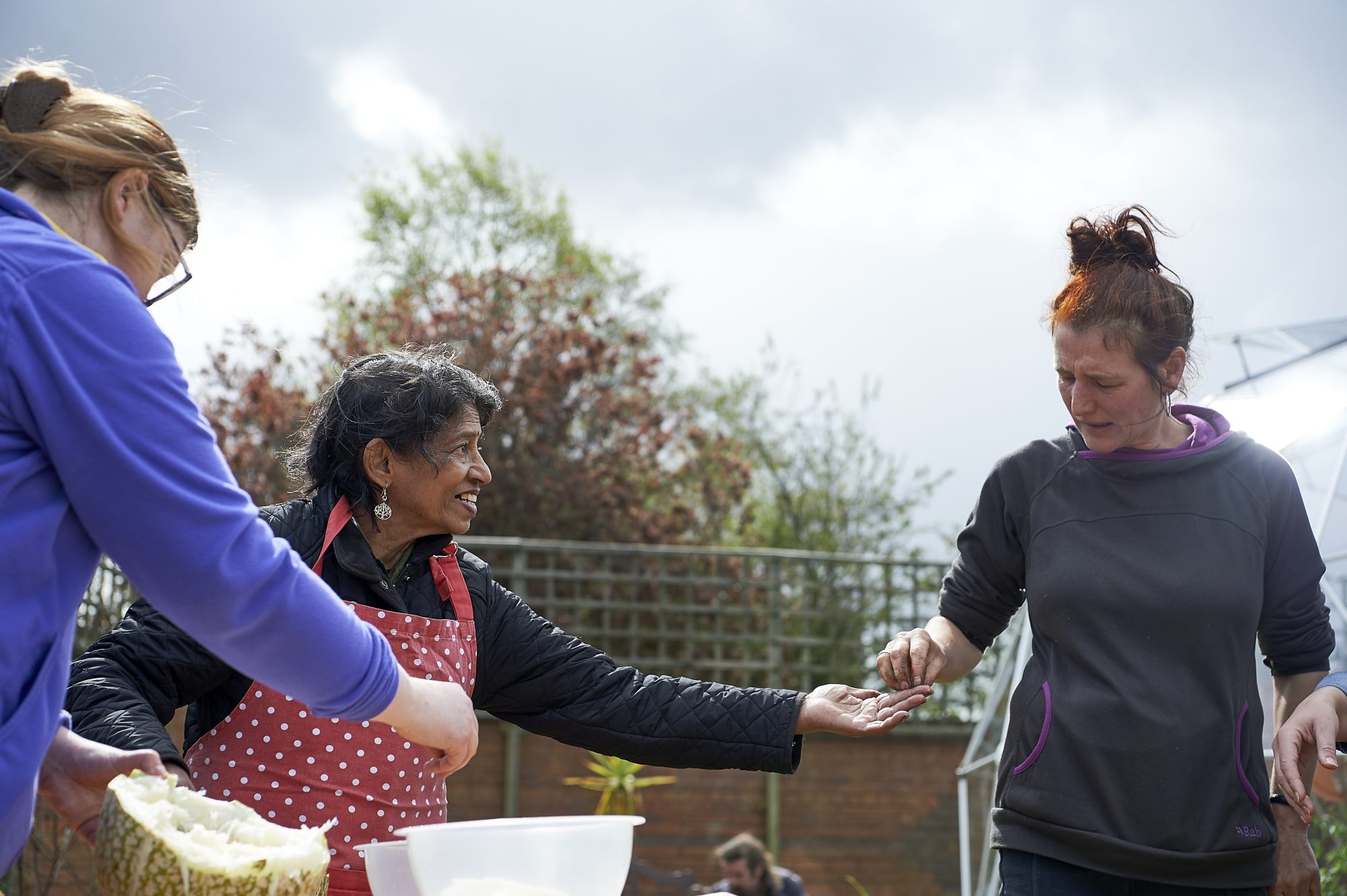
Ed Howarth
former Programme Manager, Power to Change
Most organisations operate within an ecosystem, often striving toward similar goals. Could a more open approach add value, create alignment, and highlight opportunities to collaborate?
This is what we explored as part Powering Up, a 12-month capabilities strengthening programme that supported community businesses across England. The programme provided tailored support and resources, to help organisations invest in their future and build long-term resilience.
I strongly believe open working can unlock potential. But it is not easy to do. It also takes many forms…this post being one of the more basic forms of open working. The Powering Up Notion page is another, more comprehensive version.
The power of shared knowledge
As Tris Lumley, Director of Open for All, at New Philanthropy Capital notes, “Knowledge underpins social and environmental justice.” Yet valuable insights often remain trapped within individual organisations in the social sector. Lumley explains that “most of the social sector’s knowledge is locked up in organisation-shaped boxes, labelled strategy, programme design, USP, programme evaluation. These assets are used to compete.”
But what if we approached things differently?
What is open working?
At its core, open working is about sharing processes, tools, and decisions publicly, often in real time. It’s an invitation for collaboration and learning, promoting a culture of openness that accelerates innovation and inclusivity.
For funders, this means demystifying decision-making, sharing resources like application templates, and openly discussing the successes and failures of funding initiatives. Funders hold a unique role in the system, as they are a node in the system, in the sense that they hold many and varied relationships, which others don’t, which means the potential impact of funders being open is that much bigger.
Power to Change’s Powering Up Notion page exemplifies one form of open working, providing a detailed look into a funding programme designed to support community businesses. By openly sharing this resource with Creative Commons licensing, we aim to inspire others to adapt and improve upon our model.
Why does the funding sector need openness?
Traditional funders often operate in a “black box,” where decision-making processes are opaque, and valuable knowledge from grant applications is rarely shared. This lack of transparency means critical insights about community needs and effective solutions are lost, hindering collective progress.
As Lumley argues, “In a time of increasing inequality, seemingly intractable social issues, and unfolding climate crises,” funders face monumental challenges. With limited resources to tackle these interconnected issues, openness can amplify impact by pooling knowledge, fostering collaboration, and aligning strategies across the sector.
The spectrum of openness
Openness in philanthropy can happen at multiple stages of the funding process:
- Open Discovery Work: Involving stakeholders early to identify needs and opportunities
- Open Design Process: Collaborative programme design with beneficiaries
- Open Evaluation: Sharing frameworks, findings, and failures
- Open Procurement Practices: Making funding criteria transparent, stipulate open licenses in procurement contracts, like the work of National Lottery Heritage Fund
- Open Knowledge and Research: Publishing insights for sector-wide benefit
Lumley suggests we think of openness as a spectrum: “For an organisation that would previously have carried out a private review, it can take steps into openness… The point is that the very first step has value for other stakeholders, as well as the originating organisation.”
The Powering Up Notion page falls into the Open Knowledge category
The benefits of open working for funders
Building trust and accountability
Transparency helps funders build trust with grantees and stakeholders, enhancing credibility in the communities they serve.
Fostering collaboration and innovation
Sharing resources and lessons learned reduces duplication and sparks innovation. Our Notion page invites others to adapt Power to Change’s funding models rather than starting from scratch.
Harnessing collective intelligence
As Lumley points out, “It is pure fantasy to believe that any one organisation can tackle a social or environmental challenge alone. But at the same time, we absolutely can say that many organisations together can bring about systemic change.”
Driving efficiency and agility
Open working can reduce inefficiencies through peer learning. When organisations have access to tried-and-tested tools, they can adapt rather than reinvent.
Encouraging inclusivity and equity
Transparent processes help level the playing field for smaller organisations or underrepresented groups.
The challenges of open working
Sharing work in progress or lessons from failure can feel daunting, and it is hard to do and takes resources that are not always readily available. There’s also the practical challenge of managing open resources—ensuring they’re current, accessible, and contextually relevant.
Yet, the potential rewards outweigh the risks. Transparency leads to collaboration and innovation.
How different audiences can benefit from the Powering Up Notion page
Community businesses
Allows community businesses to understand the inner workings of funders. It gives them access to the resources and learning that other community businesses were able to access by being part of the programme.
Funders
Other funders can adopt user-centered design principles and iterative processes to meet grantee needs more effectively. The page lays out the ‘how’, the ‘why’ and the ‘what’ of the Powering Up programme, from the design process, the systems and tools used to deliver the programme and any resources or templates that were created as part of the programme.
Researchers and practitioners
Detailed insights into programme design and evaluation offer rich data for analysis and learning.
Taking the first step
If you’re a funder hesitant to embrace open working, we understand—it’s a journey we’re still on ourselves. Start small. Share a single tool or resource, like an application template. Engage your partners in conversations about openness.
As Lumley puts it, “An analogy that I think works well is that taking small steps into openness is equivalent to sticking Lego bricks onto your existing work—it allows others to start to connect to theirs.”
By building these connections through shared knowledge, we can unlock the full potential of our work—and the communities we serve.



